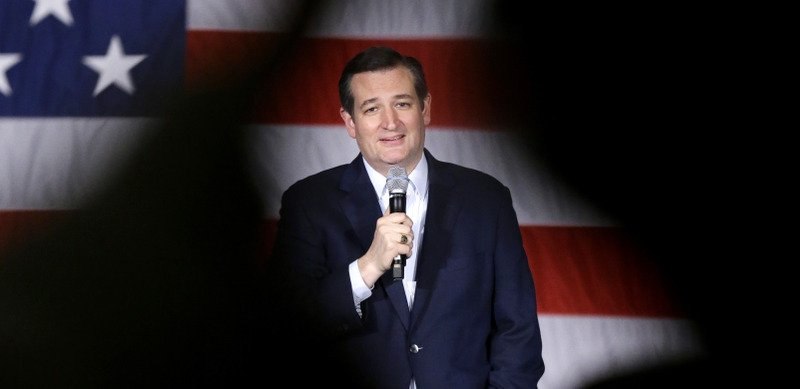Hello, I'm Will Jordan and welcome to The Pulse.
After a two week break voters are heading back to the polls, this time in "America's Dairyland" (that's Wisconsin). Here are some things you should know:
- Where do things stand?
No pledged delegates have been portioned out since our last update, so nothing has officially changed: Hillary Clinton leads Bernie Sanders by roughly 230 delegates, and Donald Trump leads Ted Cruz by around 270. That’s not to say it hasn’t been a busy week for both campaigns. - What about North Dakota?
Republicans did have their state convention in North Dakota, where they selected the 25 delegates that will go to the national convention this summer. They are not bound to a candidate, but the lion’s share of the delegates chosen either lean towards Cruz or are against Trump, a fact that has been credited to the Cruz team’s inside game. Due to party rules North Dakota delegates can change their mind before July. But add the state to a growing list of places where Cruz’s team appears to be out-hustling Trump’s, either by gaining commitments from unbound delegates or those who are bound, but can eventually change their vote if the convention is contested with multiple ballots. - What’s this have to do with Wisconsin?
Well, nothing actually. But, like the race in Wisconsin, it’s a reminder that Trump doesn’t have the race locked up just yet. The latest wave of YouGov/CBS News polling found Cruz leading Trump by 6 points in the state. This isn’t necessarily a big upset, or a sign of anti-Trump momentum – while it has large white working class, an important part of Trump’s coalition, the state’s demographics actually tend to favor Cruz. Momentum also doesn’t appear to have shifted in New York (95 delegates), where polls show Trump with huge leads. The prospect of a Wisconsin setback, however, combined with Cruz's delegate successes and the emerging conventional wisdom that Trump is all but doomed in November, might explain why betting markets are much less confident he will be a nominee than two weeks ago. - Is Wisconsin feeling the Bern?
Sort of. Polls show Sanders with a mid- to low-single digit lead there. The state’s demographics are favorable to him, and the primary is “open” – meaning it allows the participation of independents, who tend to prefer Sanders by wide margins (YouGov’s poll has Sanders leading by only 2 points, but ahead by 14 among independents). He should be expected to win, but what is more important is by how much. Wisconsin has 85 delegates, but assuming he wins by the polling average of 4 points, that would only shave a handful of delegates off of Clinton’s huge lead. If Sanders won Wisconsin by 4 and lost New York by the polling average of 10 points, Clinton’s delegate lead could grow by around 21 delegates.
- What about “momentum”?
There is an argument, which the Sanders campaign has made, that the campaign has momentum. They point out that he has won 6 of the last 7 contests. If he wins Wisconsin on Tuesday and the Wyoming Caucus on Saturday (which he should), he can go to New York and accurately claim to have won 8 of 9.
But winning states has been a poor predictor of future success in the primary so far. Clinton won 5 states on March 15 alone, and has only won Arizona since then. The Sanders states have also share certain features (open primaries, caucuses, low African-American populations) that don’t extend to many of the delegate-rich states that remain (including New York, Pennsylvania and Maryland in April). To win, he needs to do better with groups that have so far constituted Clinton’s base, including non-whites and older voters. - Something else: What’s up with Obama?
President Barack Obama’s approval rating has recovered from a dip at the end of 2015 to the highest level since his post-2012 honeymoon, and it’s now hovering around 50%. Historically, a candidate from the incumbent party (Clinton/Sanders in this case) tends to do poorly if the president’s rating is below 50%, so this is good news for the Democrats. Some have argued it is some sort of counter-reaction to Trump’s antics, but I’m not convinced. The primary may have distracted GOP leaders from criticism of Obama, but elections tend to make the party faithful fall in line (as they did in 2012). Polls also show improved perceptions of the economy.
Follow me for constant updates on the race, and other good stuff too.
The Pulse is a weekly newsletter YouGov has launched ahead of the 2016 primaries and general election to give readers a one-stop-shop for the latest polling-related news from the campaign. In addition to YouGov’s own extensive coverage of the election, The Pulse gives you the five things you need to know about the state of the campaign each week (and one you don't need to know but we think is worth knowing anyway!).












